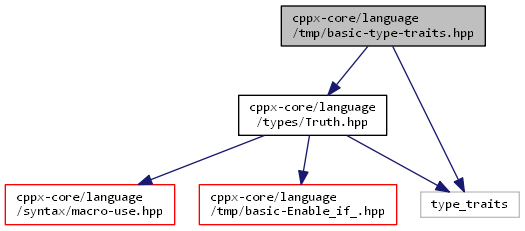is_base_and_derived_, is_same_type_, is_a_, is_const_, is_class_, is_fixed_point_, is_floating_point_, is_integral_, is_integral_ and is_unsigned_. More...

Go to the source code of this file.
Namespaces | |
| cppx | |
Variables | |
| template<class Base , class Derived > | |
| constexpr Truth | cppx::is_base_and_derived_ = std::is_base_of_v<Base, Derived> |
| template<class T , class U > | |
| constexpr Truth | cppx::is_same_type_ = std::is_same_v<T, U> |
| template<class T , class U > | |
| constexpr Truth | cppx::is_a_ = is_same_type_<T, U> or is_base_and_derived_<T, U> |
| template<class T > | |
| constexpr Truth | cppx::is_const_ = std::is_const_v<std::remove_reference_t<T>> |
| template<class T > | |
| constexpr Truth | cppx::is_class_ = std::is_class_v<T> |
| template<class T > | |
| constexpr Truth | cppx::is_fixed_point_ = false |
| template<class T > | |
| constexpr Truth | cppx::is_floating_point_ = std::is_floating_point_v<T> |
| template<class T > | |
| constexpr Truth | cppx::is_integral_ = std::is_integral_v<T> |
| template<class Int > | |
| constexpr Truth | cppx::is_signed_ = std::is_signed_v<Int> |
| template<class Int > | |
| constexpr Truth | cppx::is_unsigned_ = std::is_unsigned_v<Int> |
Detailed Description
is_base_and_derived_, is_same_type_, is_a_, is_const_, is_class_, is_fixed_point_, is_floating_point_, is_integral_, is_integral_ and is_unsigned_.
is_based_and_derived_ clarifies the roles of the template arguments, which are not apparent in std::is_base_of_t. is_based_and_derived_ is also more clean regarded as English. is_const doesn't care if you feed it a reference, it then reports about the referent type. The numerical category type traits provide a common notation for checking also for fixed point type, which is an omission in the standard library. But in general it's all mainly about readability and convenience.
Definition in file basic-type-traits.hpp.
 1.8.15
1.8.15